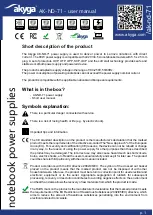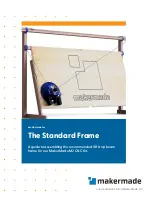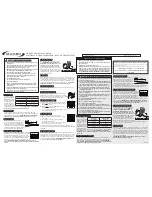
English–8
3 609 929 250 • (04.07) T
Always connect the air inlet hose 19 first to the
tool, then to the maintenance unit.
Slip the air inlet hose
19
over the coupling nipple
24
and attach the air inlet hose by firmly tightening the
hose clamp
15
.
Screw a quick hose connector
25
into the air outlet of
the maintenance unit
26
. Quick hose connectors
make possible a quick connection and, when uncou-
pled, they shut off the air supply automatically.
Take care that you do not start the tool accidentally
when you insert the coupling nipple
24
into the coupler
25
.
Type 0 607 561 114 / ... 116
Screw the hose nipple
7
into the connector at the air
inlet
8
. To prevent damage to the internal valve com-
ponents of the tool, you should use an open end
wrench (22 mm) to apply a counterforce at the pro-
truding connector of the air inlet
8
when screwing/un-
screwing the hose nipple
7
.
When you use the exhaust assembly, screw the hose
nipple
7
into the connector
22
of the exhaust assembly
(decentralised)
21
.
Loosen the hose clamps
15
of the air inlet hose
19
with a maximum length of 4 m and attach the air inlet
hose over the hose nipple
7
by firmly tightening the
hose clamp.
Always connect the air inlet hose 19 first to the
tool, then to the maintenance unit.
Slip the air inlet hose
19
over the coupling nipple
24
and attach the air inlet hose by firmly tightening the
hose clamp
15
.
Screw a quick hose connector
25
into the air outlet of
the maintenance unit
26
. Quick hose connectors
make possible a quick connection and, when uncou-
pled, they shut off the air supply automatically.
Take care that you do not start the tool accidentally
when you insert the coupling nipple
24
into the coupler
25
.
5 OPERATING INSTRUCTIONS
Blade Orbiting Action
You can optimize the cutting speed,
cutting power, and the appearance of
the cut to match the material being cut
by using the blade orbit selector
switch, which has four adjustable set-
tings. When the tool is in operation,
you can also use the orbit selector
switch
9
to change the blade orbit in
steps:
Recommendation:
–
The finer and cleaner the cut desired, the lower the
orbit setting (zero). The faster and rougher the cut
desired, the higher the orbit setting (three).
–
When cutting thin workpieces (like sheet metal) or
when a blade knife is used, you should switch off
the orbit action.
–
Hard workpieces (e.g., nonferrous metals like brass
or copper) may be cut with a small blade orbit.
–
Hard wood and plastic may be cut with a medium
blade orbit.
–
Soft materials (e.g., soft woods) or ripping (cutting
with the grain) may be cut with a large blade orbit.
Putting into Operation
The air tool operates optimally with a pressure of
6.3 bar (91 psi) measured at the air inlet with the tool
running.
Switching On/Off
In the event of an interruption of the air supply
or reduced operating pressure, switch off the
tool. Check the operating pressure and start
again when the pressure returns to normal.
Type 0 607 561 114 Locking switch
Switching on:
Slide the on/off switch
5
forward.
Switching off:
Slide the on/off switch
5
backward
to release the locking mechanism
and to switch off the tool.
8
24
26
25
19
15
7
Setting 0:
no orbit
Setting I:
small orbit
Setting II:
medium orbit
Setting III:
large orbit
9
5
















































